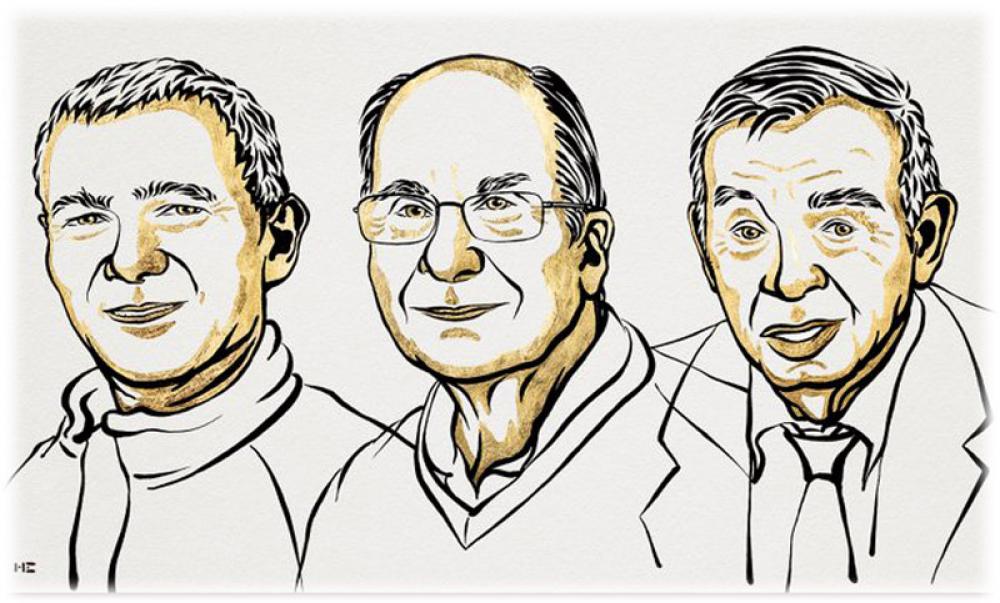Just Earth News | @justearthnews | 04 Oct 2023, 05:29 am Print
 Nobel Prize
Nobel Prize Moungi G. Bawendi, Louis E. Brus and Alexei I. Ekimov get Nobel Prize in Chemistry for 'discovery and synthesis of quantum dots'. Photo Courtesy: The Nobel Prize X page
Moungi G. Bawendi, Louis E. Brus and Alexei I. Ekimov were named the winners of the Nobel Prize in Chemistry for 'discovery and synthesis of quantum dots', said The Royal Swedish Academy of Sciences.
These smallest components of nanotechnology now spread their light from televisions and LED lamps, and can also guide surgeons when they remove tumour tissue, among many other things.
Everyone who studies chemistry learns that an element’s properties are governed by how many electrons it has. However, when matter shrinks to nano-dimensions quantum phenomena arise; these are governed by the size of the matter.
The Nobel Laureates in Chemistry 2023 have succeeded in producing particles so small that their properties are determined by quantum phenomena.
The particles, which are called quantum dots, are now of great importance in nanotechnology.
“Quantum dots have many fascinating and unusual properties. Importantly, they have different colours depending on their size,” says Johan Åqvist, Chair of the Nobel Committee for Chemistry.
Physicists had long known that in theory size-dependent quantum effects could arise in nanoparticles, but at that time it was almost impossible to sculpt in nanodimensions.
Therefore, few people believed that this knowledge would be put to practical use.
However, in the early 1980s, Alexei Ekimov succeeded in creating size-dependent quantum effects in coloured glass. The colour came from nanoparticles of copper chloride and Ekimov demonstrated that the particle size affected the colour of the glass via quantum effects.
A few years later, Louis Brus was the first scientist in the world to prove size-dependent quantum effects in particles floating freely in a fluid.
In 1993, Moungi Bawendi revolutionised the chemical production of quantum dots, resulting in almost perfect particles. This high quality was necessary for them to be utilised in applications.
Quantum dots now illuminate computer monitors and television screens based on QLED technology. They also add nuance to the light of some LED lamps, and biochemists and doctors use them to map biological tissue.
Quantum dots are thus bringing the greatest benefit to humankind. Researchers believe that in the future they could contribute to flexible electronics, tiny sensors, thinner solar cells and encrypted quantum communication – so we have just started exploring the potential of these tiny particles.
- Apple Watch can now alert you about high blood pressure—Here’s what’s new in India
- Spanish tourist stabbed at Berlin Holocaust Memorial testifies in terror trial
- Germany arrests two Iraqi nationals over suspected Islamic State links
- Sexual content creation: Over 120,000 home cameras hacked in South Korea, four arrested
- Samsung India unveils the Galaxy Tab A11+ — And it might be the best value tablet of the year!



-1763561110.jpg)


